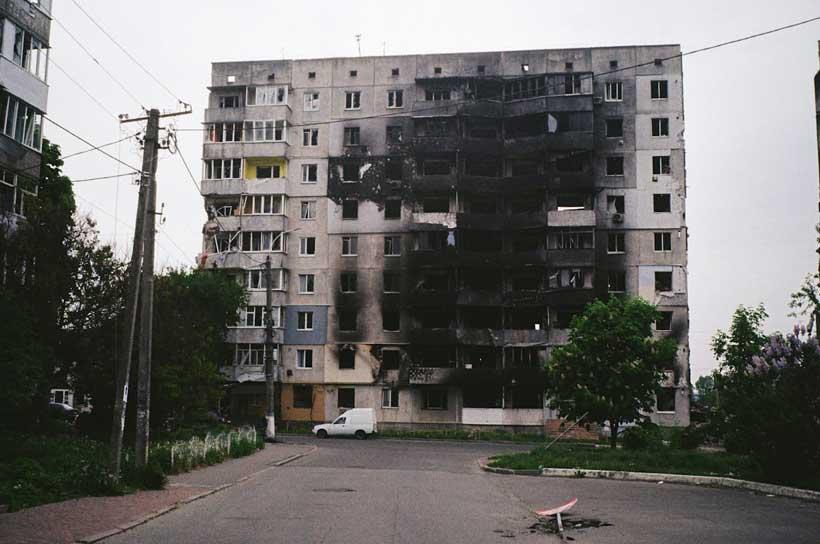BY
SHAFIQ KHATTAK
Africa-Press – Eritrea. The world is transfixed by headlines warning of escalating tensions between Iran and Israel, sparking fears of a potential catalyst for World War III. Yet, amidst these concerns lies a fundamental truth: World War III is not a distant specter, but a grim reality unfolding before our very eyes. It’s not a traditional clash of empires or armies marching across continents. Gone are the days of conventional warfare. Today’s war is a hydra-headed monster – a tangled web of low-intensity conflicts, a clandestine affair, a shadowy ballet of proxy battles, drone strikes, and covert operations which is reaching into every corner of the world and eroding the very fabric of peace and security.
The Middle East provides a stark illustration of this paradigm shift. The Israeli-Palestinian conflict, the longest-running active conflict since World War II, exemplifies this transformation. It’s a complex, dynamic issue fueled by competing ideologies, strategic objectives, and a tangled historical context. However, this conflict has morphed into a battleground for regional and global powers, further complicating any path to resolution.
Similarly, the Syrian civil war, once a localized tragedy, has evolved into a proxy battleground for competing regional and global powers. The United States, Turkey, Iran, and others have carved out their spheres of influence, perpetuating a conflict that has displaced millions and pushed an entire region to the brink of collapse. The distinction between combatant and bystander has blurred, rendering it increasingly difficult to discern who is truly at war with whom.
This blurring of lines extends into the “war on terror.” Operation Inherent Resolve, spearheaded by the US, boasts a staggering number of “partners” – over 80 nations – ostensibly battling ISIS not just in Syria and Iraq, but also in far-flung corners like Afghanistan and Libya. The true identities of these allies and the extent of their involvement remain shrouded in secrecy. This opacity fosters distrust and fuels conspiracies, further destabilizing already volatile regions.
Yemen offers another potent illustration. A coalition of 10 countries, including the US and UK, launches airstrikes on Houthi targets. Yet, the precise details of who bombed where, and who else is involved, remain a mystery. This lack of transparency is a hallmark of World War III. Wars are no longer declared; they are waged in the shadows, with devastating consequences for civilians caught in the crossfire.
The Middle East isn’t the only region entangled in this shadowy web of war. Ukraine finds itself embroiled in a trench war against Russia, where attacks by Ukrainian proxies on Russian soil are downplayed by Moscow. The expansion of NATO activities near Russia’s borders further muddies the waters of neutrality, heightening the looming threat of direct confrontation. Despite initial expectations, the conflict has not escalated into the large-scale tank battles of yore, but rather consists of smaller troop engagements at the company or platoon level.
Beyond these immediate flashpoints, simmering tensions exist elsewhere. The South China Sea witnesses a concerning arms race as China bolsters its artificial islands, while the US counters with a heightened naval presence. The Korean peninsula remains a tinderbox, with the heavily fortified DMZ serving as a constant reminder of the potential for renewed conflict.
In South Asia, the volatile relationship between India and Pakistan, nuclear-armed neighbors with a bloody history, casts a long and ominous shadow. The presence of nuclear weapons in both India and Pakistan elevates the stakes of any potential conflict to an alarming degree. Both nations have embarked on rapid nuclear weaponization programs, driven by a desire for strategic parity and a deep-seated mistrust of the other’s intentions. This arms race fuels anxieties and increases the risk of accidental escalation and a single miscalculation could have catastrophic consequences.
Africa, too, is no stranger to this pervasive conflict. Armed forces, terrorists, and mercenaries clash across the continent, from Angola to Sudan. China and Russia vie for influence, while, Western powers like the US, France, and the UK find themselves embroiled in seemingly endless “counterterrorism” efforts that only serve to further destabilize already volatile regions, creating fertile ground for new conflicts to emerge.
Moreover, neutrality in its traditional sense is becoming increasingly untenable in the modern world. Traditionally neutral countries are increasingly drawn into conflicts. Switzerland and Austria, known for their neutral stances, have provided arms to Ukraine. Similarly, Sweden and Finland have opted to join NATO. This trend highlights the interconnectedness of modern conflict and the difficulty of maintaining complete neutrality in a world where proxy wars and clandestine operations blur the picture.Top of Form
The solution? A paradigm shift. A commitment to diplomacy, conflict resolution, and a rules-based world order is essential for navigating this precarious landscape. The future we choose depends on our actions – will we dismantle the structures that perpetuate conflict or succumb to the flames of a diffused World War III?
moderndiplomacy
For More News And Analysis About Eritrea Follow Africa-Press







